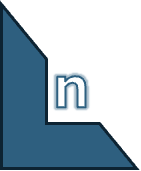In a recent writing class, I asked students to synthesize a few academic texts and share their work on Padlet. What I got back were technically “correct” submissions—but something was off. The language sounded strangely polished. Ideas were thin, barely stitched together. When I ran a quick check, my suspicions were confirmed: high similarity to the source texts, tell-tale signs of AI paraphrasing. I paused, looked at my students, and made a spontaneous decision:
“Close your laptops. You have 10 minutes. Recreate the argument in your own words—from memory.”
The results were a revelation.
Their writing had life. Flaws, sure—but also voice, honesty, and thought. It hit me then: we don’t just need new rules for AI. We need to bring back old habits. Namely: memory and noticing.
The Problem: Outsourcing the Hard Part
Tools like ChatGPT, Grammarly, or Quillbot are everywhere. They’re not inherently bad—in fact, they can support learning in valuable ways. But when students use them as crutches instead of companions, something vital gets lost: the internal struggle to make meaning. That’s where memory and noticing come in—two of the most underrated and quietly essential forces in learning.
Memory: Not Just Rote Repetition
For centuries, memory had a central role in education. Think of:
- The Grammar Translation Method (memorizing vocab and grammar rules).
- The Audiolingual Method (pattern drills and habit formation).
- The work of Ebbinghaus (the forgetting curve) and Robert Gagné (information processing in stages).
These days, “memorization” gets a bad rap—often associated with rote learning and low-order thinking. But cognitive psychology tells a different story: memory is crucial for retrieval, synthesis, and transformation of knowledge. You can’t make meaningful connections between ideas if you don’t hold those ideas in your head long enough to connect them.
Noticing: The Gateway to Deeper Learning
Introduced by Richard Schmidt in second language acquisition research, noticing refers to the learner’s conscious registration of linguistic or conceptual features. In other words: you learn what you notice.
Noticing is what turns passive exposure into active awareness. If memory is the warehouse of knowledge, noticing is the flashlight that picks out what’s worth storing. But here’s the problem: AI tools do a lot of noticing for students.Grammar? Corrected. Structure? Rewritten. Vocabulary? Rephrased. Students often accept these changes without noticing what’s changed—or why.
So What’s Being Lost?
When AI steps in too early or too often, students risk skipping:
- Remembering what a text said.
- Noticing what makes one argument more effective than another.
- Struggling with how to express complex ideas in their own voice.
Without those steps, critical thinking can’t develop—and education becomes a passive interaction with tools, not ideas.
Reworking Academic Writing Tasks: From AI-Prone to AI-Resistant
Here are concrete ways to adapt common academic writing tasks using memory and noticing as core strategies.
Task: Synthesizing Academic Sources
AI-Prone Version: “Summarize and synthesize three academic sources into a 300-word paragraph.” → Students copy-paste quotes into ChatGPT, get a perfect paragraph, and submit.
AI-Resistant Version:
Phase 1 (Memory): After reading each source, students close the text and write a one-paragraph summary from memory. Phase 2 (Noticing): They compare their version with the original, highlight what they missed, and revise with notes on why those changes matter. Phase 3 (Synthesis): In class, students collaboratively build a synthesis map—drawing connections, contradictions, and overlaps from memory + notes.
Outcome: Forces them to internalize ideas before composing.
Task: Argument Evaluation
AI-Prone Version: “Evaluate which author’s argument is more convincing and explain why.” → Students ask AI which argument is stronger, get a generic comparison.
AI-Resistant Version:
Memory Component: Students are asked to reconstruct both arguments without referring to the texts. Noticing Prompt: “Which language choices or rhetorical moves stuck with you? Why do you think they were effective?” Reflective Task: Then they read the AI version and critique it using their reconstructed understanding.
Outcome: Encourages active noticing and deeper metacognition.
Task: Academic Commentary
AI-Prone Version: “Add your own commentary on the source material.” → Students use AI to rephrase and “comment” with bland, general ideas.
AI-Resistant Version:
In-Class Prompt: “What stood out most when reading X? What did you disagree with? Write your commentary as if you’re writing a letter to the author.” Group Feedback: Share commentaries aloud, discuss patterns and personal reactions. Memory Angle: No notes allowed at first—just recall and reflection.
Outcome: Commentary becomes meaningful and personally invested.
A Way Forward: Reclaiming Our Cognitive Agency
The point isn’t to ban AI. It’s to reclaim what it has begun to displace—our awareness, our recall, and our agencyin learning.
By making memory and noticing central to task design, we can:
- Encourage students to grapple with ideas, not just polish them.
- Make cheating harder and learning deeper.
- Remind ourselves—and our students—that knowledge isn’t just out there. It’s in here.
© 2025, Dr. B. Kurdali

